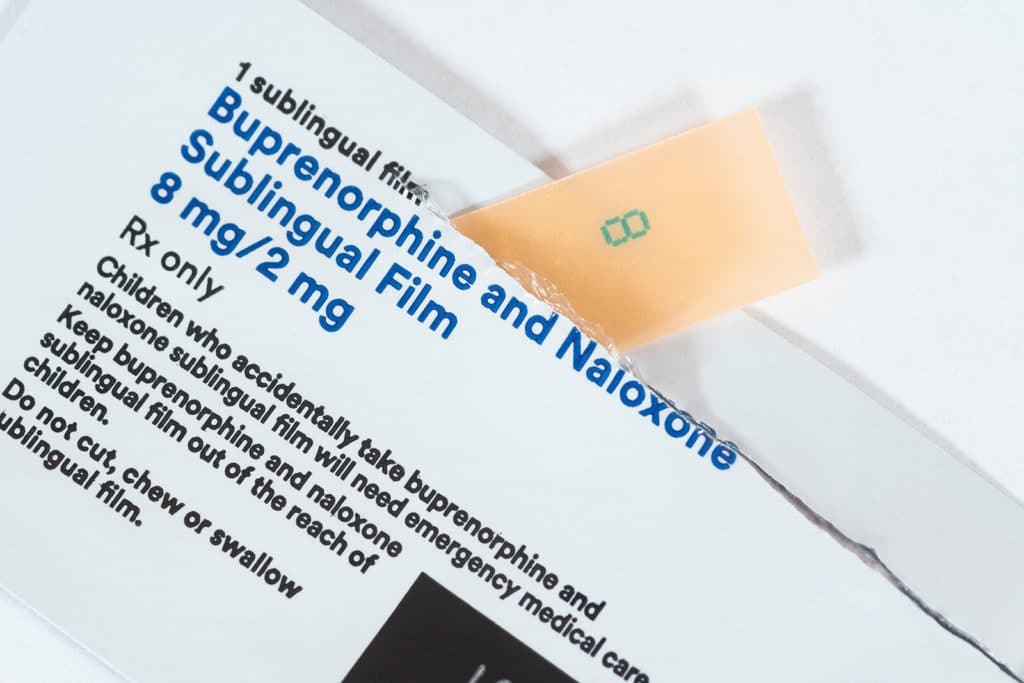Understanding SUBOXONE®’s Efficacy: How Long Does It Block Opiates?
SUBOXONE® is a drug that contains buprenorphine and naloxone. Buprenorphine was first developed in the 1960s.[1] Naloxone was approved for use in the 1970s. However, SUBOXONE® was not developed until the 2000s. Today, it is a popular FDA-approved medication for opioid use disorder treatment. SUBOXONE® is part of a medication-assisted treatment plan. It is often combined with behavioral therapy to improve treatment outcomes. For those who struggle with OUD, it helps to understand SUBOXONE® and the factors that affect its efficacy.
Table of Contents
What Is SUBOXONE®?
The purpose of SUBOXONE® is to treat dependence by substituting a safer substance. As people detox from opioids, SUBOXONE® can help reduce unpleasant withdrawal symptoms. People who receive it do so under the supervision of medical experts. Professionals may prescribe sublingual tablets or films. The recommended dosage for initial treatment is 2 mg of buprenorphine and 0.5 mg of naloxone.[2] As professionals supervise patients, they may increase dosages to control withdrawal symptoms. The drug may be used for long-term treatment plans.

How SUBOXONE® Works
It is important to understand SUBOXONE®’s mechanisms and how it affects the brain. Buprenorphine binds to the brain’s opioid receptors and blocks other opioids. Also, its effects on the brain help reduce pain, cravings and withdrawal symptoms.[1] Since it is a partial agonist, it has milder effects and is a useful medication for reducing opioid dependence.
Naloxone is important for preventing misuse. It is an antagonist that helps prevent opioid molecules from binding to receptors. When taken as directed, its effects are less dominant than the effects of buprenorphine.[3] If a person tries to crush and inject SUBOXONE®, the naloxone dominates and can cause withdrawal symptoms.
SUBOXONE®’s Duration of Opiate Blocking
The duration of SUBOXONE®’s blocking abilities can vary from one person to another. In many cases, the effects last up to a few days. For some individuals, the effects may last just 24 hours or up to 60 hours.[4] Several factors can influence how long the effects last. A person’s metabolism, dosage and frequency of use can impact SUBOXONE®’s duration.
Factors That Influence SUBOXONE®’s Efficacy
A person’s body composition can impact SUBOXONE® metabolism. People who have more muscle tend to have a higher metabolism. Also, people who are taller or weigh more tend to have a higher metabolic rate. As a result, their bodies typically break down SUBOXONE® faster.
Overall health may also impact SUBOXONE® metabolism. It is important for anyone seeking SUBOXONE® treatment to notify the supervising doctor of any known health issues. Also, doctors want to know about any current medications. SUBOXONE® can interact with some substances and cause negative effects. For example, it may interact with some medications for sleep or anxiety and increase the risk of severe side effects.[5]
Clinical Perspectives on SUBOXONE® Treatment
In most observations, peak effects of buprenorphine appear within 40 to 120 minutes.[4] The observed duration of opiate blocking varies and is between 24 and 60 hours. Many patients also report varying experiences with SUBOXONE®’s duration and effects.
Two important clinical studies demonstrated the efficacy of SUBOXONE® treatment plans.[6] In both studies, there were SUBOXONE® and placebo groups. Although both groups reported moderate cravings at the start of the studies, the SUBOXONE® recipients reported reduced cravings after several weeks. The participants who received SUBOXONE® also had a lower rate of opioid-positive urine tests after treatment. While the pre-treatment rate in one study was about 90%, the post-treatment rate was under 20%.[6]
Risks of SUBOXONE® Use
Some people who take SUBOXONE® experience side effects.[5] These are a few potential side effects:
- Headache or body aches
- Nausea or vomiting
- Gastrointestinal issues
- Anxiety or depression
- Sweating
- Diarrhea or constipation
- Weakness
- Chills or fever
- Insomnia
- Sore throat or cough
- Runny nose
Most side effects are manageable, and medical professionals can prescribe medications to ease symptoms. However, some individuals experience severe side effects. Liver damage, hormone problems, coma, dental problems and severe withdrawal symptoms are some possible severe outcomes. Always seek immediate medical attention for severe side effects.
Misusing SUBOXONE® also comes with serious risks. Dependence can develop. Also, using other opioids, alcohol or certain substances while using SUBOXONE® is dangerous. It can lead to extreme drowsiness and decreased awareness. Additionally, it can cause difficulty breathing, coma and death.[5] Call 911 if someone who takes SUBOXONE® is unconscious or has difficulty breathing.

Managing Expectations During SUBOXONE® Treatment
Choosing to quit using heroin or prescription opioids is a big step. Although the benefits of living sober are immense, it is important to work with professionals to maximize them.
Addiction treatment professionals understand all the complexities associated with the duration of SUBOXONE®’s effectiveness. They can recommend the right dose, determine when to increase the dose and more. Following their recommendations is vital for optimal outcomes. This also involves following the recommended behavioral therapy schedule. Coordinated care plans help people stay in recovery longer and feel more confident.
Find SUBOXONE® Treatment in Illinois
Although the duration of SUBOXONE®’s effects varies for each person, it is an effective treatment for many people who struggle with OUD. The Illinois Recovery Center is here to help when you are ready to start treatment. With our treatment approach, we offer personalized solutions that are designed to fit your unique needs. We combine multiple evidence-based therapies for better results. In addition to OUD treatment, we offer programs for a variety of other addictions. To learn more about SUBOXONE® and OUD treatment, please reach out to us.
References:
[1] https://www.ncbi.nlm.nih.gov/books/NBK459126/
[2] https://www.drugs.com/dosage/suboxone.html
[3] https://www.ncbi.nlm.nih.gov/pmc/articles/PMC7517938/
[4] https://www.drugs.com/medical-answers/long-suboxone-block-opiates-3536136/
[5] https://www.medicalnewstoday.com/articles/325827#professional-information
[6] https://www.ema.europa.eu/en/documents/scientific-discussion/suboxone-epar-scientific-discussion_en.pdf
SUBOXONE® is a registered trademark of Indivior UK Limited. IRC is not affiliated with Indivior UK Limited or its affiliates (“Indivior”), and any reference to it or its intellectual property is for informational purposes only and is not endorsed or sponsored by Indivior.



